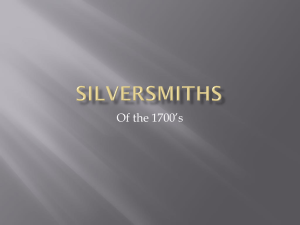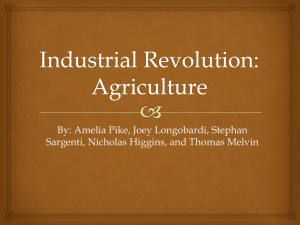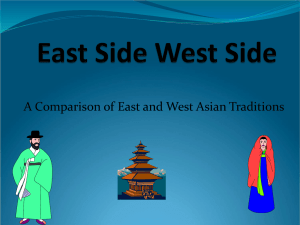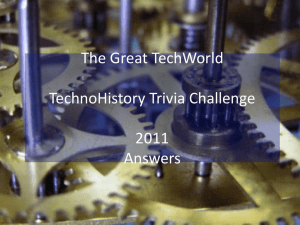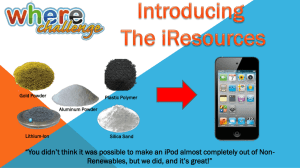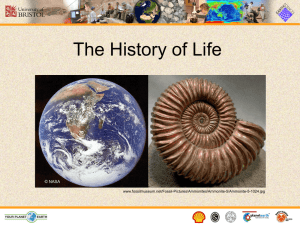Economic and Social Issues that lead sectionalism and nationalism
advertisement
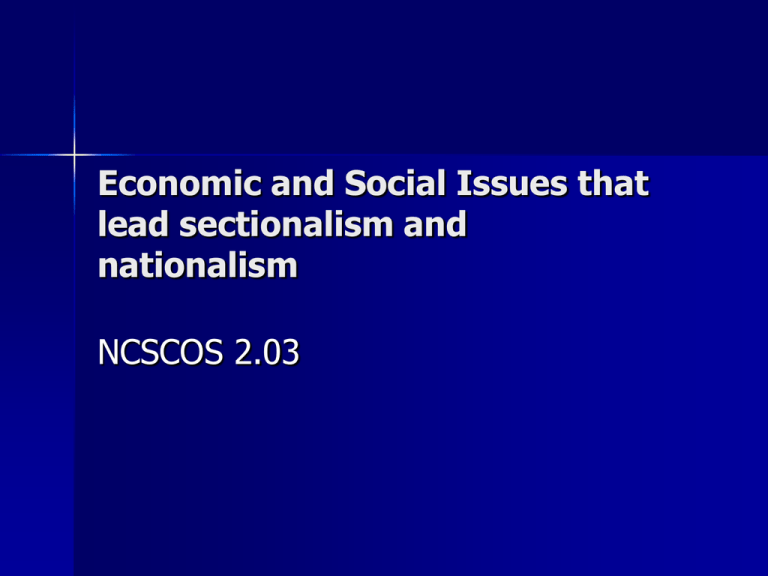
Economic and Social Issues that lead sectionalism and nationalism NCSCOS 2.03 The Big Ideas • Macro Concepts Change-the transformation of a group of people, pace or government. • Micro Concepts Industrialization-the system of creating things using machines. • Innovation-the process of improving and updating technology. • Nationalism-a belief that a country’s people are superior to others. • System-an organized way of doing something. • Sectionalism-a belief that certain sections of a country [North and South] have unique ideas. • Interchangeable Parts-machine parts that can be used in multiple ways. • Internal Improvements-better ways to do things based on people inside of a company. • Factory System-process using large numbers of workers to make goods. • Plantation System-process set up to have large farms with large numbers of slaves. • Slavery-forced labor. The Industrial Revolution The Industrial Revolution may be best described as the change in the way businesses manufactured products. Instead of making things one item at a time by skilled craftsman factories and machinery made products. Northern states became industrial. Southern states remained agricultural. Industrialization: Some Examples Eli Whitney-Invented and patented a machine that separated cotton seeds from cotton plants. Made it easier and faster to turn cotton into textiles. Removed the need for human labor [slaves] to separate cotton seeds but increased the demand for slavery to pick more cotton. John Deere-Invented a steel plow and other devices to mechanize farming further decreasing reliance on human labor [slaves] Cyrus McCormick-Invented a mechanical reaper to harvest crops without the need of human labor [slaves]. All of these inventions completely changed the Cotton Kingdom of the South The slave system was forever changed because machines did the jobs once performed by human beings. The Northern Advantages Samuel Morse invented a signaling code [language] that became uniform [fit for everyone]. The code was used for the telegraph which was a machine used to transmit messages through the airwaves. Businesses in the North used this to communicate [used later on in the Civil War]. The Northern Advantages Robert Fulton-invented and successfully sold a steam powered boat. Trade and travel was transformed from wind power [depending on weather] to coal power [controlled by people]. People could be transported more easily and faster [this was beneficial to the economy]. The Erie Canal was a manmade water way created to transport goods between Canada and the U.S. [steamboats were the primary method of travel]. U.S. commerce was tremendously improved because land obstacles no longer slowed the transportation of goods. Image Sources http://www.ihs.issaquah.wednet.edu/teachers/fine/images/krup_industrial_revolution.jpg http://en.wikipedia.org/wiki/File:Cyrus_McCormick_engr aving.jpg http://en.wikipedia.org/wiki/File:McCormick_Reaper,_18 45.jpg http://en.wikipedia.org/wiki/File:Eli_Whitney_engraving_ from_1846_memoir.jpg http://en.wikipedia.org/wiki/File:Cotton_gin_EWM_2007. jpg http://en.wikipedia.org/wiki/File:Johndeere9600.JPG http://en.wikipedia.org/wiki/File:McCormick_Twine_Bind er_1884.jpg http://en.wikipedia.org/wiki/File:L-Telegraph1.png http://en.wikipedia.org/wiki/File:Robert_Fulton__Circle_of_Thomas_Sully.jpg
